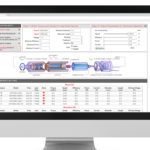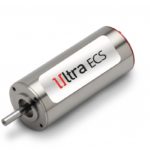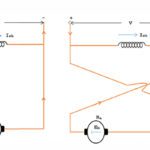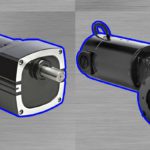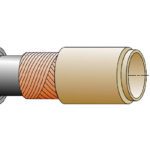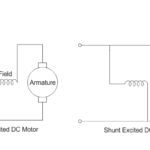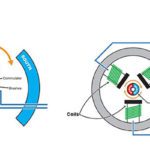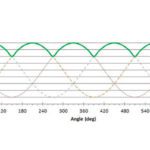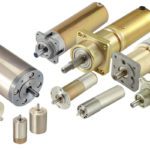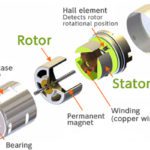This year’s survey of trends in electric motors for motion control and automation revealed several trends and emerging developments in the use of synchronous ac motors; stepper motors, especially in closed-loop offerings; brushless motors of various types; and a smattering of specialty direct-drive offerings just making inroads. Proliferation of synchronous ac motors With construction and […]
DC Motors
New high-speed, compact brushless motors from Portescap
Portescap has expanded its Ultra ECTM range of brushless dc slotless motors with the introduction of the new 35ECS motor. This 2-pole motor offers ultra high speed and power (up to 330 W, max continuous) without compromising on the smooth operation and long life offered by Portescap’s brushless slotless motors. The new 35ECS motor is […]
What is plugging for electric motors?
There are generally three types of electrical braking for motors: regenerative braking, dynamic braking, and plugging. Of the three methods, plugging provides the fastest stop, but it can be harsh on both the electrical and mechanical components. Because of this, it’s the least commonly used method of braking, but it is appropriate for some applications. […]
Bodine’s SCR-rated PMDC gearmotors — for hybrid applications
To provide greater flexibility and compatibility with unfiltered SCR controls, Bodine Electric Co. now offers a new selection of 90-V and 180-Vdc gearmotors with a rated maximum armature speed of 2,500 rpm. These gearmotors are designed for “hybrid” applications that neither match the 90-V 1,725-rpm industry standard (for operation with unfiltered speed controls) nor Bodine’s […]
What are coreless DC motors?
A typical brushed DC motor consists of an outer stator, typically made of either a permanent magnet or electromagnetic windings, and an inner rotor made of iron laminations with coil windings. A segmented commutator and brushes control the sequence in which the rotor windings are energized, to produce continuous rotation. Coreless DC motors do away […]
What are wound field motors and where are they applied?
Brushed DC motors are generally available in two types, depending on the construction of the stator: permanent magnet or wound field. Both motor types use current and windings to produce a magnetic field in the rotor, but they differ in how the stator magnetic field is produced: via permanent magnets inside the stator or with […]
What’s the difference between an EC motor and a BLDC motor?
Deciphering motor terminology can be frustrating, especially when comparing the operation and performance of various motor types. For example, some motors are characterized by their speed (synchronous or asynchronous) while others are characterized by their commutation method (brushed or brushless). And then there’s the issue of whether the motor is operated with AC or DC […]
What’s the difference between cogging torque and torque ripple?
The basic operation of an electric motor relies on the interaction between the rotor’s permanent magnets and the stator’s energized windings. But even when the motor is not powered and no current is flowing though the windings, there is a magnetic attraction between the permanent magnets of the rotor and the ferromagnetic teeth of the […]
Allied Motion debuts Globe Line of mil-spec PMDC motors, planetary gearmotors
Allied Motion Technologies announces the Globe line of mil-spec-qualified fractional horsepower PMDC motors and gear motors. These motors are available off-the-shelf or on short lead time through Allied’s QuickShip program. Modified versions – with specially machined mounting provisions, holding brakes, tachometers and/or encoders – are available within two to three weeks through Allied’s QuickMod program. […]
External rotor motor basics: Design and applications
Conventional brushless DC motors are constructed with a permanent magnet rotor located inside a wound stator. But one type of DC motor is designed with the rotor on the outside and the stator and housed inside the rotor. Permanent magnets are mounted on the inner diameter of the rotor housing (sometimes referred to as the […]

